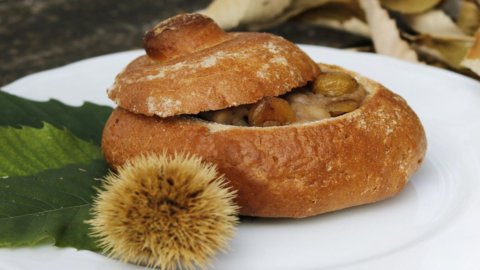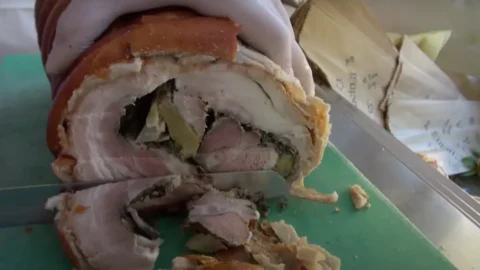Traditionally they have been the food of the poor, of those who could not afford anything else, and in some cases they have been real survival food for mountain populations. Then on the one hand there was the depopulation of the "high lands" with the decline towards the urbanization of the plains and on the other in more recent years the diffusion of the gall wasp, an insect that destroyed leaves and plants. In short, chestnuts, the symbol of autumn, seemed to be heading towards the last act. Then the miracle, their rediscovery in gourmand gastronomy and the increased demand of the markets together with the adoption of adequate measures for the prevention and protection of the territory implemented by the ministry and local bodies have opened up new scenarios for chestnuts. And throughout Italy in this period until November, the food and wine events dedicated to the undisputed protagonist of autumn gastronomy are multiplying together with mushrooms with proposals of great gluttony. The most immediate are the chestnut festival of San Zeno di Montagna in the province of Verona, the chestnut festival of combai in the province of Treviso the chestnut festival of Val di centa in Trentino the market exhibition of good marron di marradi in the province of Florence the chestnut festival of vallerano in the province of Viterbo and the chestnut festival of Monte Amiata.
On Monte Baldo, four restaurants united to celebrate the autumn chestnut
The restaurant association of San Zeno di Montagna brings together four restaurateurs on Monte Baldo, overlooking the Veronese side of Lake Garda who have come together to promote the typical products of the area: the chestnut of San Zeno dop, the Monte Veronese dop cheese, the herbs of Monte Baldo, the black truffle of Baldo, Bardolino wine and Chiaretto, Garda dop extra virgin olive oil and many other jewels from the agricultural tradition of this land. Monte Baldo is also called the garden of Europe due to the great floristic heritage which, thanks to its very varied morphological characteristics, has various climatic zones, a Mediterranean belt (up to 700 m), a mountain belt (from 700 m to 1.500 m), a boreal belt (from 1.500 m to 2.000 m) and an Alpine belt (from 2.000 m). .
A typical recipe for the Feast of San Zeno di Montagna is the chestnut minestrone, a traditional mountain variant of the classic bean minestrone of the Venetian tradition.
The photo we are proposing is of the Taverna Kus restaurant housed on the ground floor of an old farmhouse whose current conformation seems to date back to the seventeenth century. In this building, which has always been identified with the name of palàs – palace – probably as a reminder of its support function to the castle that once existed in the area, four small rooms welcome the customer in an elegant and perfectly restored environment where the ancient rural origin of the structure and where we did not want to lose that placid atmosphere of a place immersed in the countryside.
La Taverna del Kus is one of the four restaurants on Monte Baldo that support the initiative. The others are the Costabella Hotel Restaurant, a few km from the beaches on the Veronese shore of Lake Garda, immersed in the luxuriant nature of Mount Baldo, the Bellavista hotel restaurant In a rustic style, surrounded by large windows, it offers traditional cuisine, for savor the delights offered by the hinterland of the lake and the mountains, the Albergo Ristorante Al Cacciatore, a family environment, a meeting point for pleasant excursions on Mount Baldo and is just a few kilometers from Lake Garda.
Chestnut minestrone recipe
ingredients (4 pers.)
100 g of potatoes,
80 g of celery,
80 g of carrots,
100 g of onion,
100 g of cabbage,
50 g of beans,
200 g of peladèi (boiled chestnuts),
a clove of garlic,
a few sprigs of rosemary,
2-3 rinds of Parmesan cheese,
Garda extra virgin olive oil,
its sale,
pepper.
Preparation
Cut all the vegetables more or less equally into pieces. Also cut the crusts of Parmesan cheese into pieces.
Pour the extra virgin olive oil into a saucepan and fry the rosemary and crushed garlic without letting them brown.
At this point remove the aromas and add the vegetables. Cover everything with water, salt and cook uncovered, skimming when necessary.
At the end of cooking, add the peladèi (peeled chestnuts cooked in salted water with sage leaves) and the cheese rinds and adjust the flavor





